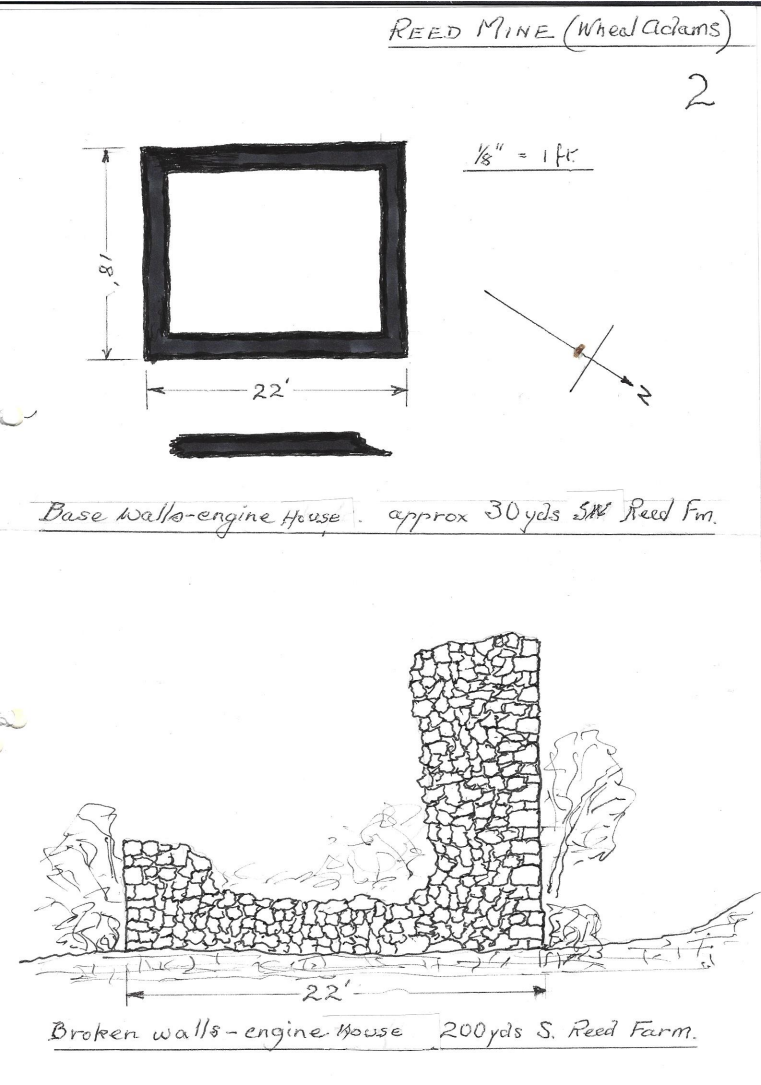Geology, mines and quarries - page 2
The extractive industries played an important part in the life and development of the Teign Valley – first mining in the mid-nineteenth century, and then quarrying for much of the twentieth.
The silver-lead lodes
A narrow silver-lead zone was the valley’s major source of exploitable ores. The sought-after galena (lead ore) and its associated silver were raised in substantial amounts. Several other minerals are present in the lodes. Some of these – blende (zinc ore), barytes, fluorspar (used in glass manufacture) and two iron ores (limonite and spathic iron/siderite) – were sold during the heyday of the Teign Valley mines, though the major commercial uses for the ever-present barytes was barely established by the time the silver-lead operations came to an end. Small amounts of copper were raised at Wheal Exmouth, while nickel and cobalt were present at nearby Wheal Adams though not in exploitable quantities.

Manganese
Manganese occurs here and there in the Teign Valley away from the granite as discontinuous beds and impregnations within the bands of Teign chert that are interleaved with the other sedimentary rocks (shales and mudstones) of the Lower Carboniferous period. Modest amounts were mined at different times through the course of the nineteenth century, chiefly in Doddiscombsleigh and Ashton parishes but also west of the river in Christow and Hennock where deposits were sometimes found within the silver-lead zone. Later a constituent of a variety of alloys and essential in the production of stainless steel, it’s early nineteenth century uses were first in ceramics and as a decolouriser in glass production. With the rise of the cotton industry its value as a reagent in the preparation of chlorine bleach greatly increased demand.
Haematite and its mines
Micaceous haematite, locally known as shiny ore, is a flaky substance occurring in thin veins trending east-west within the granite, away from the valley proper. It’s a type of iron ore, but not one that iron itself can be produced from. Its early use was as a blotter for ink when ground into the material known as pounce, in this case specifically called Devon Sand. Later on, it became a constituent in paint-making, particularly in anti-corrosive treatments (the flakes overlap and provide a scale-like protection), and this remains its primary use. In the years between 1897 and 1911 it was mined in a small way at Shuttamoor Farm, Christow, on the boundary with Hennock not far below the source of the small stream that supplies Canonteign Falls. The other eleven micaceous haematite mines were south and west of here – the nearest and by far the most productive being Great Rock, half a mile NNW of Hennock village, which had workforce of up to thirty throughout the twentieth century until its closure in 1969. Kelly Mine, on the far side of the granite plateau beside the A382 east of Lustleigh, had the longest recorded (though not continuous) life – from a lease granted in 1797 to its final closure in 1951. It was a small mine, never employing above ten people. Thanks to the Kelly Mine Preservation Society established in 1984 it now has a significant afterlife as a restoration project, the surface areas of which are regularly open to the public. As such it helps to illuminate the history of mining in the district.